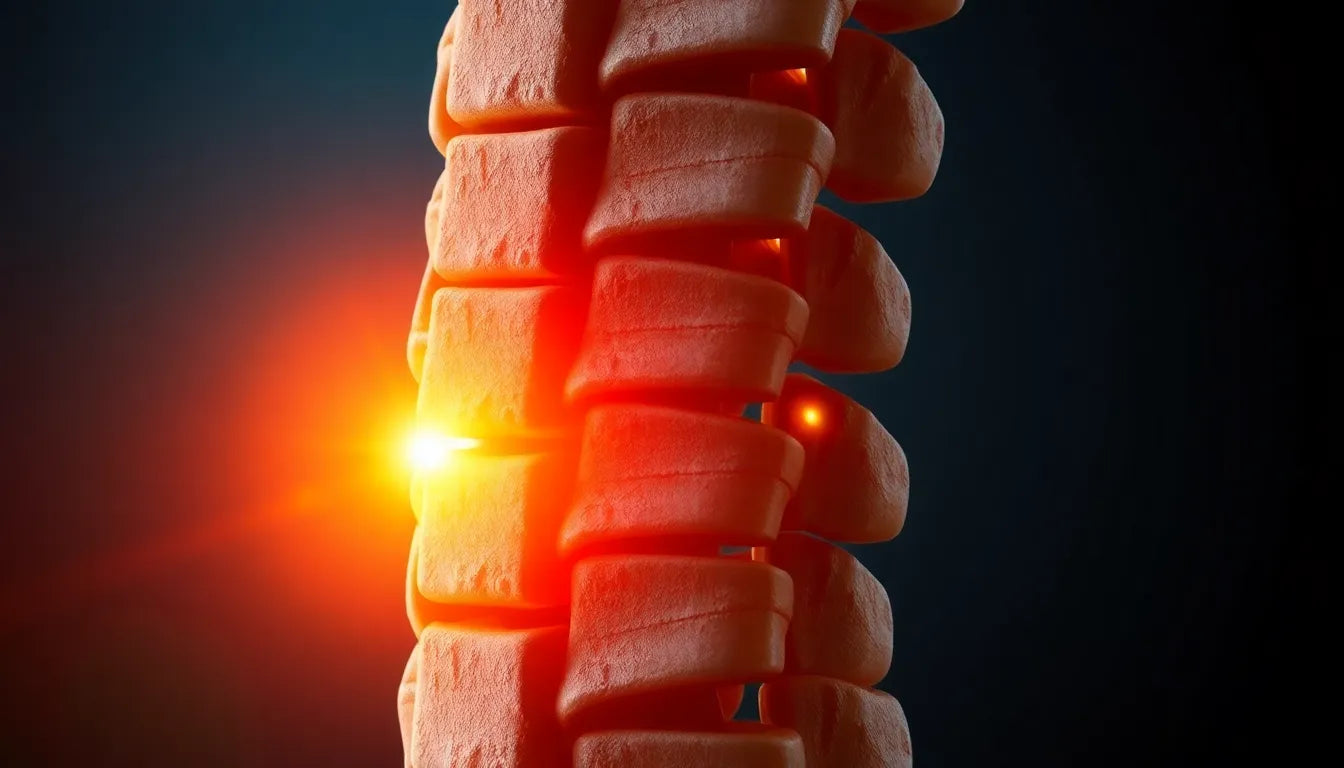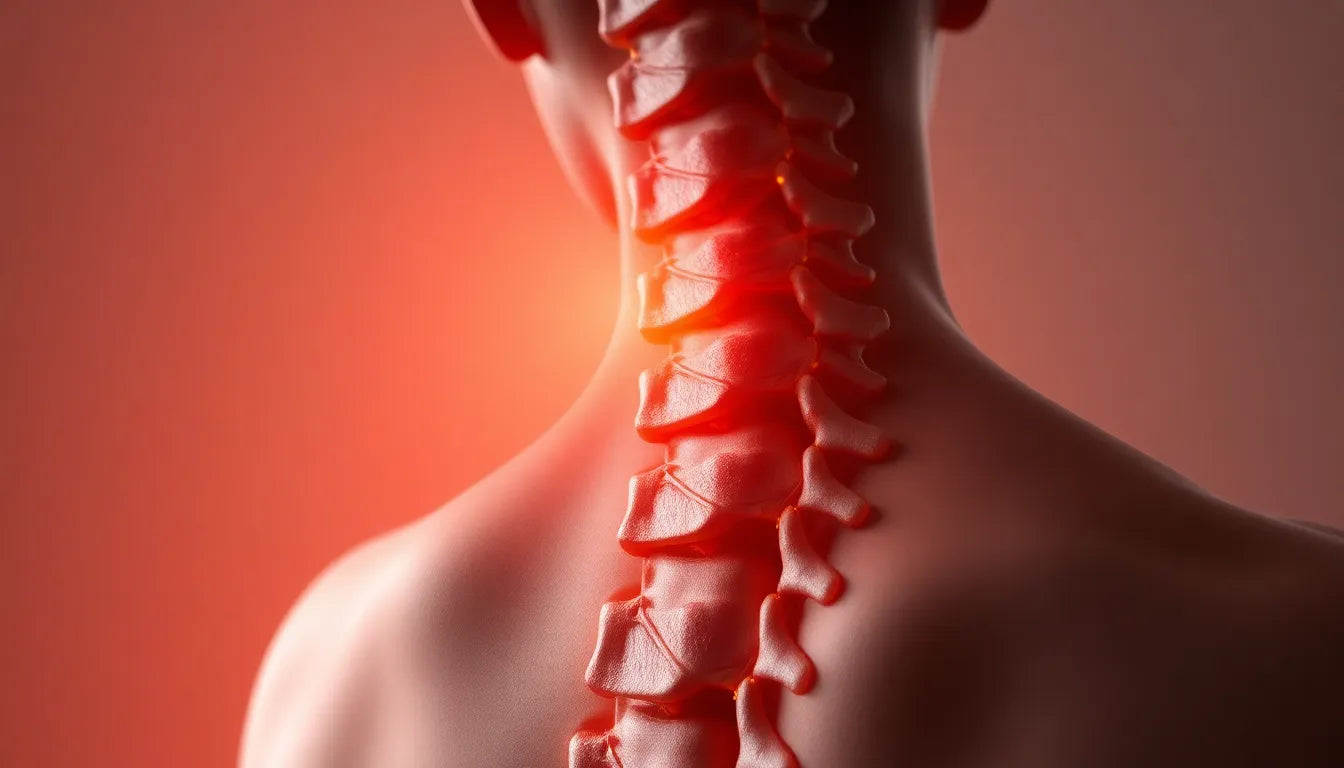Understanding the complexities of a thoracic herniated disc is crucial for those who experience persistent back pain or neurological symptoms. A thoracic herniated disc occurs when the soft inner material of a spinal disc in the thoracic region protrudes through its outer layer, potentially pressing on nearby nerves or the spinal cord. This condition, although less common than cervical or lumbar herniations, can lead to significant discomfort and functional impairment.
Causes and risk factors
Several factors can contribute to the development of a thoracic herniated disc. Age-related degeneration is a primary cause, as the discs naturally lose hydration and elasticity over time, making them more susceptible to herniation. Other risk factors include traumatic injuries, repetitive strain from physical activities, and genetic predispositions. Understanding these causes is vital for patients and healthcare providers to identify potential cases early and discuss appropriate management strategies.
Living with a thoracic herniated disc
For those living with a thoracic herniated disc, daily life can present numerous challenges. The condition often manifests with symptoms such as myelopathy, which involves dysfunction of the spinal cord, progressive weakness in the lower extremities, and severe radicular pain that radiates from the back to other parts of the body. These symptoms can significantly hinder mobility and quality of life, making it difficult to perform routine tasks.
When surgery becomes necessary
While many individuals with a thoracic herniated disc can find relief through non-surgical treatments like physical therapy, medication, and lifestyle modifications, surgery may become necessary when these methods fail to alleviate symptoms. Surgical intervention is typically considered a last resort, reserved for severe cases where the risk of permanent neurological damage or debilitating pain outweighs the potential risks of surgery.
Purpose of this guide
This blog post aims to demystify the surgical options available for thoracic herniated disc treatment. By providing a comprehensive guide, we hope to empower those affected by this condition to make informed decisions about their health care. In the following sections, we will explore various surgical approaches, their indications, and the potential outcomes, offering a detailed look into what patients can expect when considering thoracic herniated disc surgery.
Surgical indications for thoracic herniated disc
Thoracic herniated disc surgery is generally reserved for cases where non-surgical interventions have failed to provide relief. Surgery becomes a viable option when symptoms are severe and include myelopathy, progressive lower extremity weakness, or intolerable radicular pain. These symptoms indicate that the herniation is causing significant compression on the spinal cord or nerve roots, potentially leading to permanent damage if not addressed surgically. Therefore, understanding the severity and progression of these symptoms is crucial for determining the need for surgical intervention.
Exploring surgical approaches
When it comes to thoracic herniated disc surgery, several approaches are available, each tailored to the specific characteristics and location of the herniation. Choosing the right approach depends on factors such as the herniation's position, whether the disc is calcified, and the patient's overall health.
Anterior trans-thoracic approach
The anterior trans-thoracic approach involves accessing the spine through the chest cavity. This method is particularly beneficial for central and centro-lateral herniations, especially when the disc is calcified. Video-assisted thoracic surgery (VATS) is often employed in this approach, allowing for enhanced precision and visualization. While this technique can offer excellent outcomes, it requires a high level of surgical expertise and may involve a longer recovery period.
Posterolateral approach
The posterolateral approach, often utilizing a costotransversectomy technique, is another option for addressing thoracic herniated discs. This approach is best suited for non-calcified lateralized herniations. By accessing the disc from behind and the side, surgeons can effectively relieve pressure on the affected nerves. Although this method can be effective, it requires careful surgical planning and may pose challenges in terms of access and visibility.
Minimally invasive techniques
Minimally invasive techniques, such as thoracoscopic approaches and retropleural mini-thoracotomy, have gained popularity due to their reduced impact on surrounding tissues and faster recovery times. These techniques involve smaller incisions and less disruption to the body's anatomy, leading to less postoperative pain and quicker rehabilitation. However, they also come with a significant learning curve for surgeons, requiring specialized training and experience to ensure optimal outcomes.
Comparative analysis of surgical approaches
To aid in understanding the differences between these surgical approaches, the following table provides a comparison based on key factors:
| Approach Type | Indications | Advantages | Challenges |
|---|---|---|---|
| Anterior Trans-Thoracic | Central and centro-lateral herniations, calcified discs | Enhanced precision with VATS, effective for calcified discs | Requires high surgical expertise, longer recovery |
| Posterolateral | Non-calcified lateralized herniations | Effective for lateralized herniations | Challenging access and visibility |
| Minimally Invasive | Various herniations, preference for less invasive options | Reduced tissue impact, faster recovery | Significant learning curve for surgeons |
Understanding these surgical options and their respective benefits and challenges is vital for patients considering thoracic herniated disc surgery. In consultation with their healthcare providers, patients can make informed decisions that align with their medical needs and personal preferences, ultimately aiming for the best possible outcome.
Outcomes and complications in thoracic herniated disc surgery
When considering thoracic herniated disc surgery, understanding the potential outcomes and complications is crucial for making an informed decision. Success rates for these surgeries can vary depending on the approach and the specific characteristics of the herniation. For instance, studies have shown that the anterior trans-thoracic approach, particularly when using video-assisted thoracic surgery (VATS), results in satisfactory outcomes for approximately 76% of patients. This method is often favored for its precision and effectiveness in treating calcified discs.
However, like any surgical procedure, thoracic herniated disc surgery carries potential risks. Complications may include neurological deterioration, dural tear, and subarachnoid-pleural fistula. These complications underscore the importance of thorough pre-operative planning and intra-operative monitoring to minimize risks and improve surgical outcomes. Patients should discuss these potential complications with their surgeons to fully understand the risks and benefits of the procedure.
Patient considerations and recovery expectations
Choosing the right surgeon is a critical step in the journey toward relief from a thoracic herniated disc. Patients should seek a surgeon with extensive experience in the specific surgical approach recommended for their condition. Pre-surgical consultations provide an opportunity to discuss the procedure in detail, address any concerns, and establish realistic expectations for recovery.
Recovery from thoracic herniated disc surgery varies depending on the surgical approach and individual patient factors. Generally, patients can expect a period of rehabilitation that includes physical therapy to restore strength and mobility. While minimally invasive techniques often result in faster recovery times, patients undergoing more invasive procedures may require a longer healing period. Adhering to post-operative care instructions and attending follow-up appointments are essential for a successful recovery.
Frequently Asked Questions
What are the signs that I might need thoracic herniated disc surgery?
Surgery may be necessary if you experience severe symptoms such as myelopathy, progressive lower extremity weakness, or intolerable radicular pain that does not improve with non-surgical treatments. These symptoms indicate significant compression on the spinal cord or nerve roots, which could lead to permanent damage if left untreated.
How do I choose the right surgical approach?
The choice of surgical approach depends on several factors, including the location and characteristics of the herniation, whether the disc is calcified, and your overall health. Your surgeon will recommend the most suitable approach based on these factors and their expertise.
What are the recovery times associated with these surgeries?
Recovery times can vary. Minimally invasive techniques often allow for quicker recovery, with patients returning to normal activities within a few weeks. More invasive procedures may require several months of rehabilitation. Your surgeon will provide a detailed recovery plan tailored to your specific situation.
Are there non-surgical alternatives I should consider first?
Yes, non-surgical treatments such as physical therapy, medication, and lifestyle modifications are typically recommended before considering surgery. These options can effectively manage symptoms for many patients. Surgery is usually reserved for cases where these methods fail to provide relief.
What are the risks of not having surgery if recommended?
If surgery is recommended and not pursued, there is a risk of symptom progression, including worsening neurological deficits and permanent damage to the spinal cord or nerve roots. It is essential to weigh the potential risks and benefits of surgery with your healthcare provider to make an informed decision.
Understanding the complexities of thoracic herniated disc surgery and being well-informed about the available options can empower patients to make the best decisions for their health and well-being. With the right guidance and care, relief from this challenging condition is within reach.


















